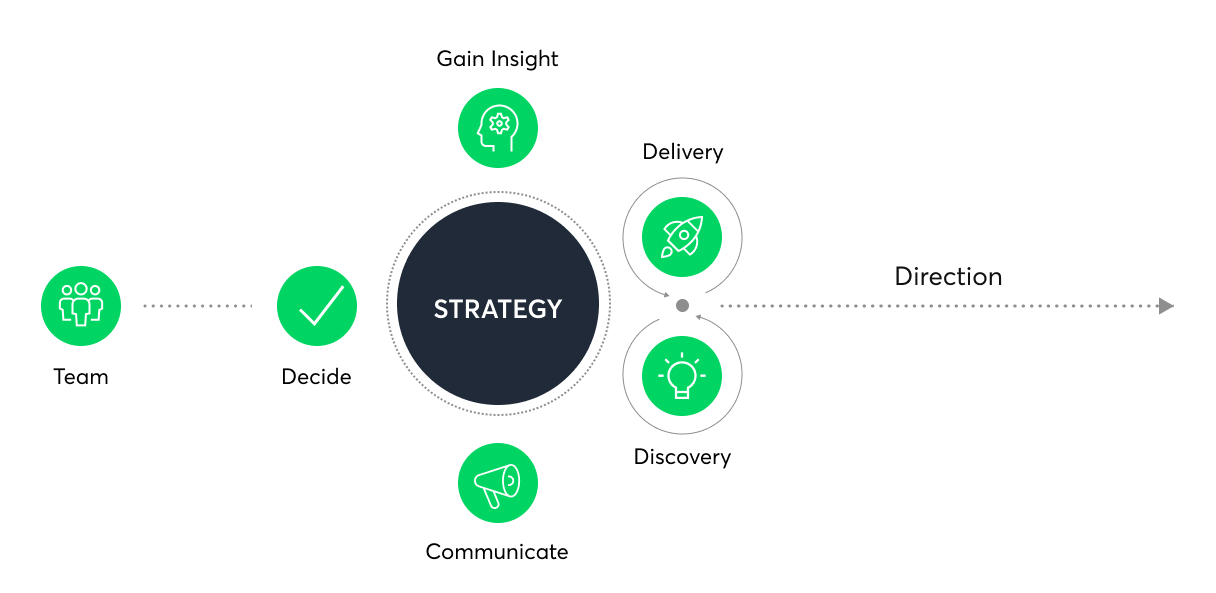An Introduction to Product Strategy

There are currently over 9 million apps in the world, yet, only a small percentage survive – 95% of new products fail, according to Inc.
Even though it’s extremely difficult, there are some companies that are notable for having repeated product successes: Apple, Google, Amazon, Tesla, SpaceX. You might say: “That’s easy, these companies are market leaders and they have innovation projects that cost several hundreds of millions. Even if they fail, it won’t even make a dent.” Fair enough.
That’s why I prefer to use another example: Y Combinator. Y Combinator invests seed rounds of $125,000 in startups and has a success rate of 80%, with a portfolio valued at over $300 billion, with 125+ companies being valued at over $150 million.
So there might be a science to creating successful products and there are definitely some lessons to learn from these companies who seem to have cracked it. We’ve also had our fair share of success helping innovators succeed, and in our opinion it all starts with a solid foundation. Let me share with you our introduction to Product Strategy.
Why is strategy important?
Strategy is needed to provide direction.
Strategy → Direction
But why do we need a direction? Can’t we solve problems by trial and error? It helps to have a strategy:
- To make better use of limited resources
- To navigate uncertainty
- To beat competition
- To guide your team
Strategy is not a luxury of big companies. All organizations are trying to solve complex problems under conditions of uncertainty. Most likely, there is competition and we need to make the best possible use of our resources. Your team, big or small, should know in which direction to go. This is as relevant for a startup, if not more.

Product Strategy key activities
When we’re creating a strategy, the main thing we’re doing is making decisions.
Strategy = Decisions
Considering we are operating in an uncertain environment, we need to have the context to make informed decisions. So we need to reach into the unknown and gather insights. Assuming we have insights and we’ve made decisions, we need to communicate those decisions to the team.

For your strategy to fail, it’s enough to fail at one of these three elements:
- Lack of context leads to poor decisions.
- It can also happen that you will have all the insights and simply make the wrong decisions. Perhaps because your decision-making process is not effective.
- If your communication fails, your team will execute in the wrong direction.
Products are hard! Even if you get all three key activities right, it doesn’t mean you will find success. Timing matters. You only see the result of your decisions later. Sometimes the landscape changes and an amazing strategy becomes obsolete.
Product Strategy cadence
Your decisions are often assumptions that should be tested. That’s why your Product Strategy needs to be an iterative, continuous process. Discovery and delivery play a crucial role in validating the strategy.
Discovery cycles allow you to minimize uncertainty, gather insights, and provide lower-confidence validation to certain aspects of your strategy. Delivery provides even better insights and higher confidence levels.
While discovery and delivery typically have cycles of one to two weeks, the Product Strategy has different cadences depending on the granularity of the decisions.
- Long term: five to ten years, e.g., vision
- Medium term: one year, e.g., strategic bets/objectives, high-level assumptions related to your business model that you will set out to test during the year
- Short term: three months, e.g., quarterly OKR planning and selection of discovery and delivery initiatives that will allow you to test your strategic bets.

Business Strategy vs Product Strategy
These two are often confused. Business Strategy should answer the question: How will this business become successful? Product Strategy should answer the questions: How will this product become successful?
It’s understandable how it can get confusing because often they overlap. Depending on the size, lifecycle stage, and the nature of the company, it might be easier or harder to distinguish both. In companies where product is the core of the value proposition, they probably will overlap more.
In other companies, where product takes a supportive role or where there are several products, they are easier to tell apart. It’s not worth getting stuck in the theoretical discussion of whether something belongs to the business or product strategy.
Product Leaders and Product Managers should be familiar with the highest form of strategy that exists in your organization, whether it is referred to as a company strategy, business strategy, organization strategy, or product strategy. If you are familiar with the highest form of strategy, it’s easy to break it down into areas that relate to product. It’s ok that there will be an overlap.
Creating a Product Strategy
Enough with the theory! Let’s get to the practical part. Here are some high-level frameworks and tools that have been handy in products we’ve worked on. We’re not claiming this is the only way of doing it, in fact we hope this inspires you to create your own approach, so feel free to pick and choose from the list below.
Our advice on how to use these tools:
- Phase 1: If you are a scale-up/enterprise, most likely you will have existing materials. Collect the existing materials, summarize them in these canvases, organize workshops for the missing bits. If you are a startup, sit with your core team and fill these in no more than a day or two. Use your current knowledge, don’t make this a very long process.
- Phase 2: “Get out of the building,” talk to users, do market research. This is the discovery and delivery phase. Collect context, share it continuously.
- Phase 3: Repeat point one, this time with more context.
Contextualize
I like to split the context into three distinct dimensions: Market, Company, and User. If you can, collect information on all of these:
Market Context: BMI – Context Map Canvas (the company section is too small though, so I like to separate it)
Company Context: Financial Results, Unit Economic Reports, ROI Analysis, Product Metrics Dashboards
User Context: Customer Journey, Buyer Personas, Empathy Map Canvas, Value Proposition Canvas
Decide
Most of these high-level tools are a collection of questions that will allow you to think about whether you know the answers or not, and push you to make decisions. There are a number of methodologies and other more granular tools that can help fill these in.
- Decision-Making Framework: Intercom Product Decision-Making Framework
- Vision and strategic bets – 5 Bold Steps Vision Canvas
- Business Model: Business Model Canvas or Lean Canvas, DHM model, (if applicable) Portfolio Mapping
- North Star Metric
- Objectives & Key Results (OKRs)
- Roadmap including delivery and discovery initiatives
Communicate
- Product Strategy three pager: Summarize the insights extracted from the context section on page one and state your decisions on the next two pages. Share it with your team.
Create a successful Product Strategy
Product Strategy is not a luxury of big companies. Startups and scaleups can and should create a strategy too in order to make the best possible use of limited resources, navigate uncertainty, beat competition, and guide their teams. Our simple framework is one way of creating a successful Product Strategy. Focusing on key activities such as decision-making, contextualization and communication will facilitate working in uncertain environments and build a product users will love.


